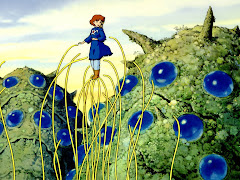Each parent donates genes to their offspring via sexual reproduction. The genes combine to give different but similar looking offspring.
Homologous chromosomes
a) Humans have 46 chromosomes consisting of 23 homologous pairs. Each parent donates one chromosome to each of the 23 homologous pairs. That means, half of an individual’s chromosomes comes from the female parent while the other half comes from the male parent.
b) Homologous chromosomes are the same length and carry the same genes in the same location. Those genes could be different versions. E.g., imagine the homologous chromosomes carry the eye color gene but one produces blue eyes while the other produces brown.
c) The exception is the sex chromosomes. For these, females have a homologous pair (XX) while males do not (Xy).
d) The other chromosomes are called autosomes (non-sex chromosomes).
Two types of cells in general
a) Somatic – diploid (2n) body cells. Contain a complete set of chromosomes.
b) Reproductive cells – haploid (n) sex cells. These cells are called gametes and contain only half the number of chromosomes. If one somatic cell (2n) is fertilized by another (2n), the resulting zygote would contain twice the number of chromosomes (4n). I.e., the chromosome number would double each generation (4n, 8n, 16n etc.). For this reason, the chromosome number must be reduced during the production of gametes. This way, one haploid (n) gamete is fertilized by another (n) and the resulting zygote is diploid (2n).
c) The zygote carries a complete set of chromosomes. Half from the the female parent and half from the male.
d) Every cell in the resulting organism is diploid and arises by mitotic division of the original zygote.
The main stages of meiosis are the same as those in mitosis
a) Meiosis happens in two stages: Meiosis I and Meiosis II. The two cell divisions result in 4 haploid daughter cells.
b) During Meiosis I (the reduction division) homologous chromosomes are separated.
c) In Meiosis II, sister chromatids are separated.
d) After the chromosomes are replicated, sister chromatids remain attached at the centromere. Also, homologous pairs (each consisting of two sister chromatids) remain close together. The four sister chromatids are called a tetrad and the process is called synapsis.
e) During synapsis, the arms of chromosomes in a homologous pair become intertwined. Pieces of the homologous chromosomes break off and switch places. This phenomenon is called crossing over. This increases genetic diversity which results from sexual reproduction.
*************************************************************************************
MEIOSIS I
Interphase - duplication of DNA
Prophase I - similar to mitosis except for synapsis
1. Synapsis - pairing of homologous chromosomes
2. Chromatin shortens & thickens to become chromosomes
3. Nuclear envelope disappears
4. Nucleolus disappears
Metaphase I
1. Homologous chromosomes line up in pairs across the equator
2. Spindle fibers attach to the centromeres of the chromosomes
Anaphase I - separation of homologous chromosomes
Telophase I
1. Chromosomes arrive at spindle poles
2. Nuclear envelope reforms in some cells
3. Each cell has one each homologous chromosome, cytokinesis occurs to split cells
No Interphase
Prophase II
1. Chromosomes shorten and thicken
2. Nuclear envelope disappears
3. No duplication occurs
Metaphase II
1. Chromosomes line up along the equator
2. Spindle fibers attach to the centromeres
Anaphase II
1. Centromeres divide
2. Sister chromatids separate, become chromosomes
Telophase II
1. Nuclear envelope forms around each set of chromosomes
2. Nucleolus appears in each nucleus
3. Chromosomes lengthen and become indistinct
---> Cytokinesis occurs forming 4 cells
*************************************************************************************
For further illustration/information, please check out these links:
1) http://www-users.york.ac.uk/~mal503/common/thesis/jpegimages/meiosis.jpg
2) http://www.sfu.ca/~fankbone/biol/meiosis.jpg
3) http://tutor.lscf.ucsb.edu/mcdb/tutorial/meiosis/
Also do check out the link under "For My Students" for Animations on Meiosis, Click and Clone, Meiosis = double cell division and Meiosis tutorial.




10 comments:
teacher ar teacher >.< u bully me lar~
back to topic : why meiosis so complicated wan >.<" . eh wait , in a nucleus , we have 46 chromosomes . So , our body have billions of cell, that means we got ( billions X 46 chromosomes ) chromosomes in our body ? >.< sometimes i try to link ...but i duno whats the reason ...
ok done :P
Haha, Kok Khong my dear....that's why the human body is one of the most interesting but also very complicated thing to study. Study well and enjoy it while you still can! ^_^ Gambatte!!
so if we have (billions X 46 chromosomes ) chromosomes in our body, then we wouldn't be humans would we?
I wish not concur on it. I assume warm-hearted post. Specially the appellation attracted me to review the intact story.
Amiable fill someone in on and this mail helped me alot in my college assignement. Gratefulness you on your information.
I really like when people are expressing their opinion and thought. So I like the way you are writing
I am reading this article second time today, you have to be more careful with content leakers. If I will fount it again I will send you a link
Amiable dispatch and this enter helped me alot in my college assignement. Thanks you for your information.
Post a Comment